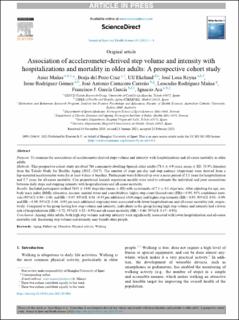| dc.contributor.author | Mañas, Asier | |
| dc.contributor.author | del Pozo-Cruz, Borja | |
| dc.contributor.author | Ekelund, Ulf | |
| dc.contributor.author | Reyna, José Losa | |
| dc.contributor.author | Gómez, Irene Rodríguez | |
| dc.contributor.author | Carreño, José Antonio Carnicero | |
| dc.contributor.author | Mañas, Leocadio Rodríguez | |
| dc.contributor.author | Ara, Ignacio | |
| dc.contributor.author | García-García, Francisco J. | |
| dc.date.accessioned | 2022-03-10T12:27:53Z | |
| dc.date.available | 2022-03-10T12:27:53Z | |
| dc.date.created | 2021-08-06T10:39:52Z | |
| dc.date.issued | 2021 | |
| dc.identifier.citation | Journal of Sport and Health Science. 2021, Artikkel 05.004. | en_US |
| dc.identifier.issn | 2095-2546 | |
| dc.identifier.uri | https://hdl.handle.net/11250/2984267 | |
| dc.description | This is an open access article under the CC BY license (http://creativecommons.org/licenses/by/4.0/). | en_US |
| dc.description.abstract | Purpose: To examine the associations of accelerometer-derived steps volume and intensity with hospitalizations and all-cause mortality in older adults.
Methods: This prospective cohort study involved 768 community-dwelling Spanish older adults (78.8 ± 4.9 years, mean ± SD; 53.9% females) from the Toledo Study for Healthy Aging (2012–2017). The number of steps per day and step cadence (steps/min) were derived from a hip-mounted accelerometer worn for at least 4 days at baseline. Participants were followed-up over a mean period of 3.1 years for hospitalization and 5.7 years for all-cause mortality. Cox proportional hazards regression models were used to estimate the individual and joint associations between daily steps and stepping intensity with hospitalizations and all-cause mortality.
Results: Included participants walked 5835 ± 3445 steps/day (mean ± SD) with an intensity of 7.3 ± 4.1 steps/min. After adjusting for age, sex, body mass index (BMI), education, income, marital status and comorbidities, higher step count (hazard ratio (HR) = 0.95, 95% confidence intervals (95%CI: 0.90–1.00, and HR = 0.87, 95%CI: 0.81–0.95 per additional 1000 steps) and higher step intensity (HR = 0.95, 95%CI: 0.91–0.99, and HR = 0.89, 95%CI: 0.84–0.95 per each additional step/min) were associated with fewer hospitalizations and all-cause mortality risk, respectively. Compared to the group having low step volume and intensity, individuals in the group having high step volume and intensity had a lower risk of hospitalization (HR = 0.72, 95%CI: 0.52–0.98) and all-cause mortality (HR = 0.60, 95%CI: 0.37–0.98).
Conclusion: Among older adults, both high step volume and step intensity were significantly associated with lower hospitalization and all-cause mortality risk. Increasing step volume and intensity may benefit older people. | en_US |
| dc.language.iso | eng | en_US |
| dc.subject | aging | en_US |
| dc.subject | follow-up | en_US |
| dc.subject | objective | en_US |
| dc.subject | physical activity | en_US |
| dc.subject | walking | en_US |
| dc.title | Association of accelerometer-derived step volume and intensity with hospitalizations and mortality in older adults: A prospective cohort study | en_US |
| dc.type | Peer reviewed | en_US |
| dc.type | Journal article | en_US |
| dc.description.version | publishedVersion | en_US |
| dc.rights.holder | © 2021 Published by Elsevier B.V. on behalf of Shanghai University of Sport | en_US |
| dc.source.pagenumber | 8 | en_US |
| dc.source.journal | Journal of Sport and Health Science | en_US |
| dc.identifier.doi | 10.1016/j.jshs.2021.05.004 | |
| dc.identifier.cristin | 1924333 | |
| dc.description.localcode | Institutt for idrettsmedisinske fag / Department of Sports Medicine | en_US |
| dc.source.articlenumber | 05.004 | en_US |
| cristin.ispublished | true | |
| cristin.fulltext | original | |
| cristin.qualitycode | 1 | |
